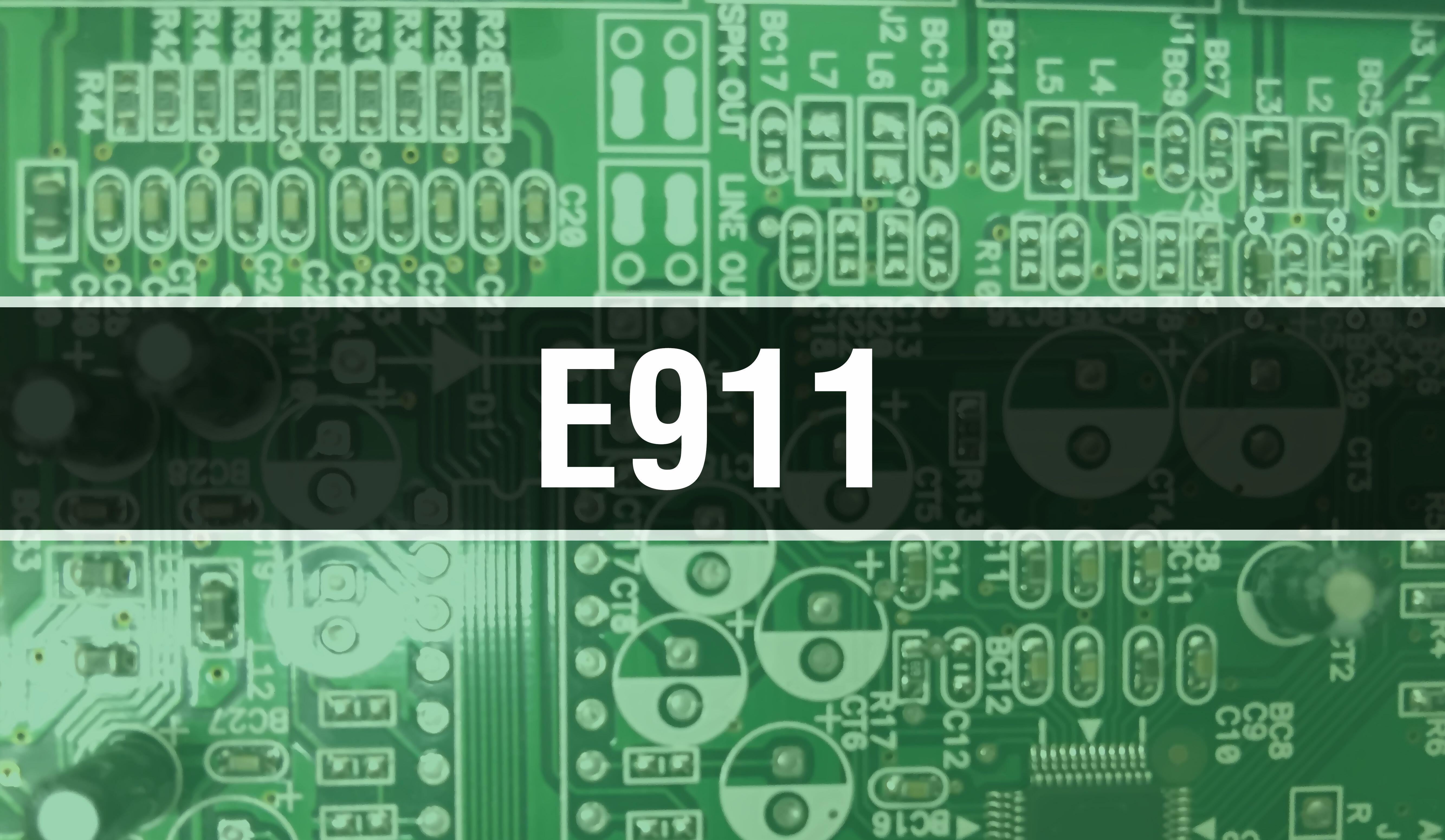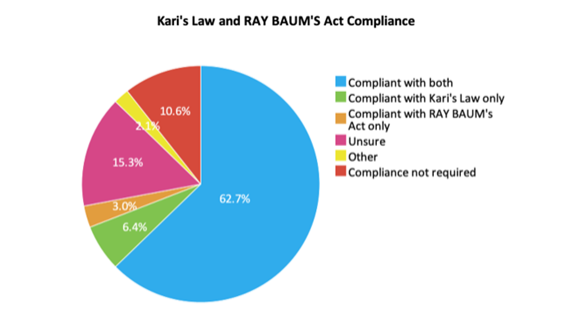For the last five or so years at Enterprise Connect I’ve had the opportunity to moderate a panel discussion on the topic of Enterprise 911, or E911 for short. Each year, after the session, we ask ourselves if we’ve run out of things to talk about. And each year, the answer is a resounding “no”. Judging by the recent posts here on NoJitter, including "The Funding Needed to Upgrade Our Public Safety Infrastructure Just Went Away" by Martha Buyer, "911 Is Getting a Lot Smarter. Here Are Several Things You Need to Know" by Martha and Mark Fletcher and "The Basics: Enterprise E911 vs NG911" by Melinda Sensabaugh, E911 topics are still top of mind for enterprise IT leaders, vendors, and consultants.
The challenges of implementing and maintaining a compliant, and manageable E911 strategy are reflected in Metrigy's latest Workplace Collaboration study of 440 organizations, approximately 65% of which have operations in the United States. Among this group we found some surprising results. Today, just 62.7% of participants believe that they are fully compliant with the dispatchable location transmission requirement in RAY BAUM's Act, and the direct dial to a 911 emergency call center with notification requirements in Kari’s Law. Of those organizations which have not yet achieved compliance, 100% say they will be Kari’s Law compliant by the end of 2024, and almost 87% say they will be RAY BAUM’s Act compliant in the same timeframe. While it’s nice to see that the vast majority of companies are heading toward compliance, anything short of 100% creates potential legal and civil risk.
As we’ve noted in our past sessions, and as others have written about, defining “compliance” remains a challenge. The laws provide compliant requirement dates for installation of new multi-line telephone systems, but many companies read that requirement to say that their older phone systems are somehow exempt from compliance.
While I'll leave the legal discussions to Martha, I think it’s fair to say that a company that argues before a judge that they didn’t need to provide a compliant phone system because that system is old potentially faces a heightened risk of loss (and, as I’m not a lawyer, I urge readers to seek their own independent legal counsel). Indeed the family of Kari Hunt successfully sued the operator of the hotel where Ms. Hunt tragically died, noting failure of employee training to respond to an emergency and that Ms. Hunt’s children were unable to dial 911 because they were not aware that they had to dial a 9 to reach an outside line. At the time, Kari’s Law did not exist, and there was no legal requirement for direct dial to 911 or appropriate notification of on-site personnel or providing a valid call-back number.
E911 management challenges are poised to take on a new wrinkle thanks to the introduction of fixed-mobile convergence solutions from companies including Cisco and Microsoft. Cisco, for example, recently delivered Webex Go, an innovative offering that allows companies to use a dual-SIM approach to assign a business number to their mobile phone. Microsoft’s Teams Phone Mobile is a dedicated offering for company-provisioned mobile phones that essentially turns the mobile phone into a Teams Phone System extension. In both cases, the solutions are provided in partnership with mobile carriers, and they both allow users to place calls across the company phone system (either Webex Calling or Teams Phone System) via the mobile phone’s native dialer.
In both cases, if someone using a mobile phone configured as an enterprise phone system extension calls 911, then the call is handled by the mobile network operator who routes the call to the appropriate emergency call center (ECC). Since the 911 call is handled by the mobile operator, and doesn’t traverse the enterprise phone system, 911 calls may not support on-site notification or provide the ECC with dispatchable location information.
This is a problem.
Consider the scenario of someone who while at their desk experiences a health emergency and calls 911 but is unable to speak to the 911 operator. If that call is made from a traditional desktop phone, or softphone, then the call is routed to the ECC by the enterprise phone system. Notification is provided to the proper person (or persons) such as security officers who can direct the first responders to the caller’s location when they arrive at the front door of the building. And, the ECC will have a valid call-back number in accordance with Kari’s Law.
Now, consider the employee who places the 911 call on their company provided or supported mobile device. That call goes across the mobile operator network to the appropriate ECC which may not have a dispatchable location. Since the call is handled by the mobile network operator, no notification is provided to onsite personnel. In this scenario, even if the ECC operator is able to identify the caller’s physical address, first responders will arrive at the building but nobody will know that a 911 call was placed, nor from where in the building the call was placed. The end result is a delay in locating the caller.
Enterprises face this issue today even without deploying FMC. Most calls made to 911 already are placed via mobile phones. And a person in time of distress within an office is not likely to realize that they should use the enterprise phone system to place a 911 call rather than their personal mobile device. Solutions from vendors including 911inform try to address this problem by geofencing an office location and interfacing with 911 location management services such as RapidSOS to provide operators with exact location, and to enable notifications, but these solutions require additional investment. According to our research, only about 16% of companies purchase third-party E911 management tools with most simply relying on whatever E911 location management, call routing, and notification capabilities that are provided by their phone system vendor.
The bottom line is that E911 management is still an important issue and one that is only becoming more complex as employees increasingly rely on their mobile devices as their primary calling endpoints. And failure to address E911 location and notification, especially for mobile device users, may create both safety and civil risk. I hope you’ll join us at Enterprise Connect on Monday March 27 at 10:00 AM for "Managing E911 for the Hybrid Workforce" as we discuss these topics, and a whole lot more.
ABOUT METRIGY: Metrigy is an innovative research firm focusing on the rapidly changing areas of Unified Communications & Collaboration (UCC), digital workplace, digital transformation, and Customer Experience (CX)/contact center—along with several related technologies. Metrigy delivers strategic guidance and informative content, backed by primary research metrics and analysis, for technology providers and enterprise organizations.
Enterprise Connect 2023 will be held from March 27-30 at the Gaylord Palms in Orlando, FL. You can check out the attendance options here and dive into our line-up of sessions and keynotes here.











